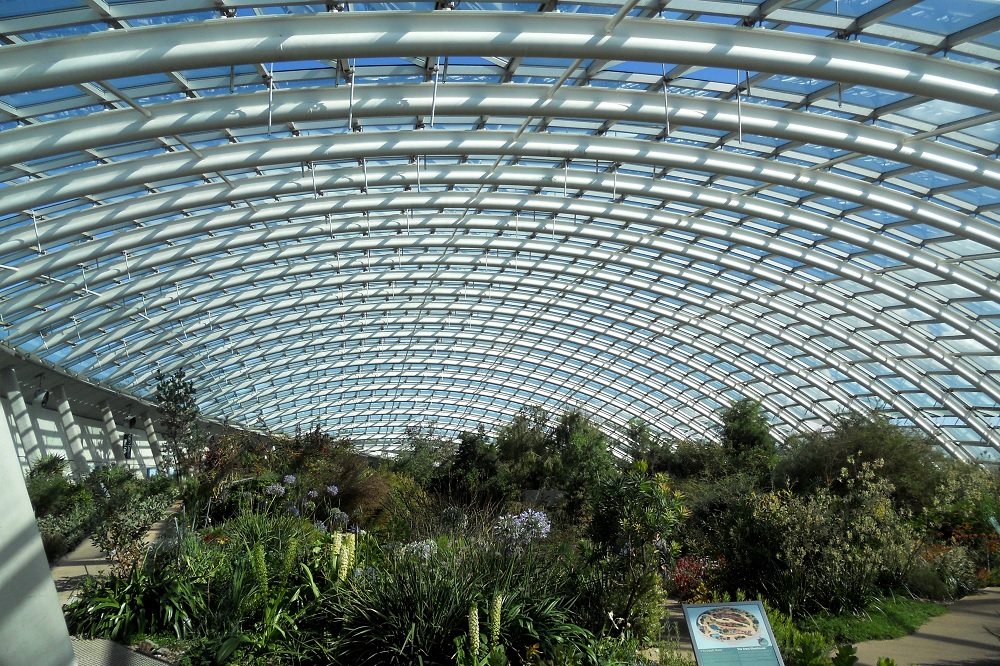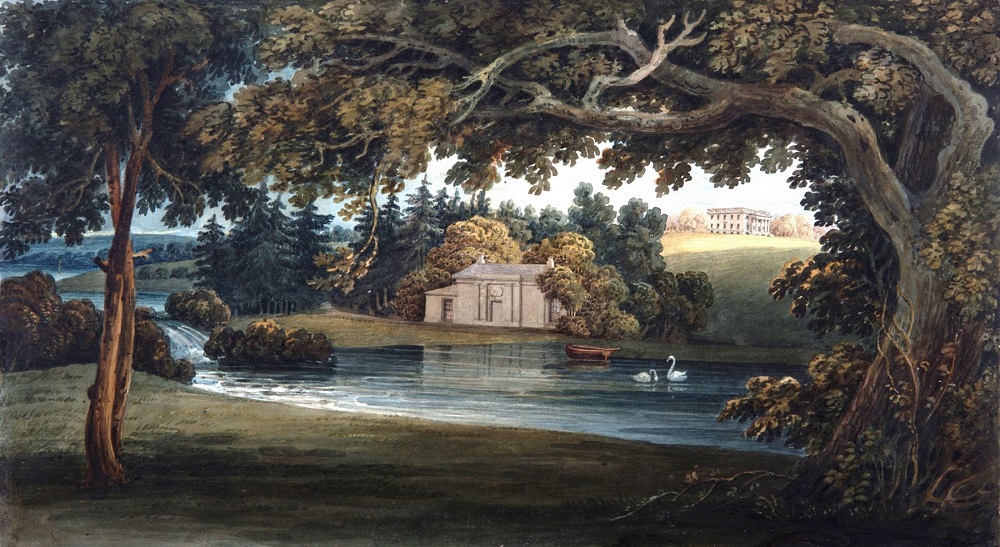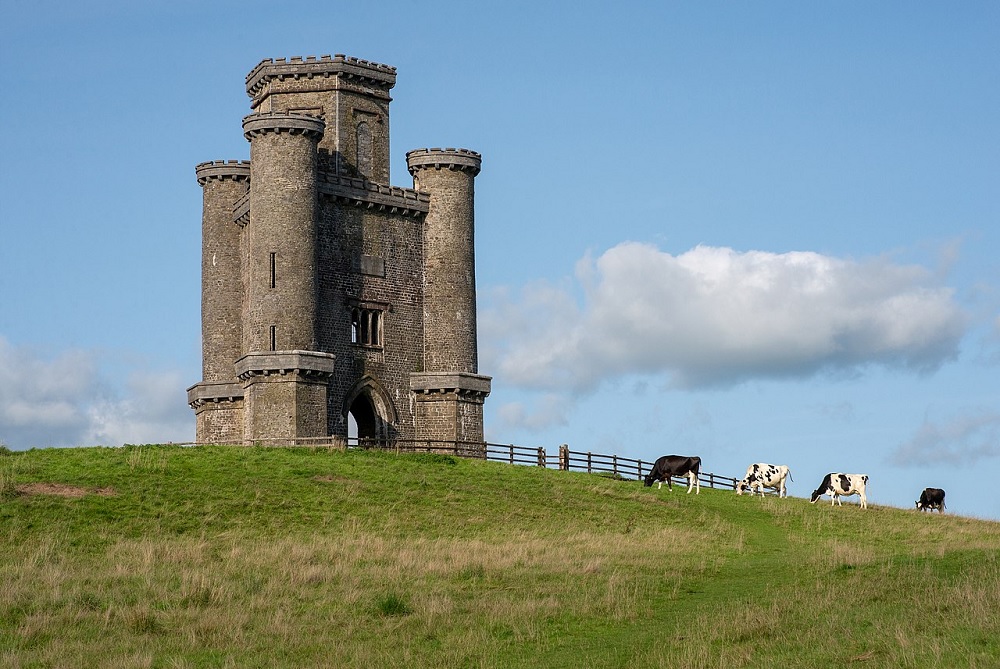How the National Botanic Garden of Wales has its roots in the East India Company

Meurig Williams
If you drive down the lush and verdant Tywi river valley, a few miles before reaching Carmarthen in south Wales you will see on the left a gothic tower high on a hill. It is Paxton’s tower, a folly, an ornamental building with no practical purpose but which adds an element of status and intrigue to a grand estate.
That estate was Middleton Hall, built in the early 17th century by the Middleton family. Henry Middleton and two of his brothers were sea captains and adventurers who were instrumental in setting up the East India Company in 1600 which was chartered by Elizabeth I as a group of merchants in order to get a share of the spice trade in the East Indies (modern Indonesia).
The East India Company plays a prominent role in the history of Middleton Hall. It remained the home of the Middleton family for six generations until it was purchased in c.1789 by Scotsman William Paxton (1744−1824) with the intention of employing the enormous wealth he had made in the East India Company to gain political power and entry into the company of the landed elite. Why he selected Wales in unknown.
Many countries are now grappling with the memorialization of colonial adventurers with statues and grand buildings, and with the historic entitlement of white Europeans to the possessions of others who were considered to be “lesser” people.
But occasionally we come across outcomes derived from imperialistic adventures which are more sanguine, for they were unforeseen by the colonial masters and later developed with public money for the public good. The transformation of the Middleton Hall estate into the site of the National Botanic Garden of Wales is such an outcome.
Up to 1740, the East India Company was a peaceful commercial enterprise unbothered by the internal politics of India, even though the charter had granted it political and military powers. But, as a result of a challenge from France for the trade, it developed into a military and diplomatic organization.
It was managed by Robert Clive (1725-1774). He made his mark in one of the most decisive victories in the world over the Indians at the 1757 Battle of Plassey – decisive because it secured the beginning of British India. It was described as the supreme act of corporate violence in history. The East India Company seldom turned a profit, as employees diverted funds into their own pockets and returned to Britain with large fortunes. When Clive returned to UK he was the richest self-made man in Europe. Powys castle in Wales now houses more Mughal artifacts, looted by Clive, than are on display at any one place in India.
Disdain
It was Clive’s generation of great personal wealth that inspired other adventurers to follow him into India. William Paxton was one of those. Paxton was of modest origins, born in Edinburgh to a chief clerk to a wine merchant. He joined the Navy aged 12 as a Captain’s servant, and later became a free mariner on a ship bound for the East India Company.
In 1778 he was appointed Master of the Mint of Bengal. This placed him in a powerful position which enabled him to facilitate international money transfer which allowed for wealthy retirement of expatriates to Britain. As was the custom, he also lined his pockets with very large amounts of money that came from ‘presents’ he obtained from local rulers and other forms of corruption.
He returned to Britain in 1785 with his enormous wealth, and in 1786 he married and produced nine children. Paxton bought the Middleton Hall estate in 1789 and converted it between 1793-95 into one of the most magnificent houses in Wales. He could afford to impress and he hired the best architect of the day, Samuel Pepys Cockerell (1753–1827), great-great nephew of the diarist Samuel Pepys.
Middleton Hall was described as “one of the best built and most magnificent houses in Wales.” It was in the neoclassical style and complete with a grand and imposing portico. The interior was elaborate in accordance with the latest fashions, and it also incorporated advanced features such as an ice house and water closets which were fed by a reservoir built on a nearby hill.

But the features which, after restoration, have enduring appeal are the gardens and a chain of lakes, damns, sluices and a stunning waterfall. A three-acre double-walled garden was highly unusual, the inner wall creating a milder micro-climate which extended the fruit and vegetable growing season, and this was further enhanced by underground heating. A bathhouse was built for family use. And visitors were also allowed access to the waters outside the parkland wall.
In 1802, as high sheriff, magistrate and mayor of Carmarthen, Paxton attempted to enter into parliament as a Whig candidate in the infamous Carmarthenshire county election with almost no experience in politics but a great deal of cash to finance his campaign. He attempted to buy votes through lavish entertainment with meals and drinks which was billed for more than 15,000 pounds, a vast sum at that time. But he lost to Tory candidate James Williams of the old established Edwinsford family.
In 1824, aged 80, Paxton died at his London home. Middleton Hall was put up for sale and the proceeds of his estate distributed equally to his surviving children.
Paxton’s tower, again designed by Cockerell, was built in 1806-09, most likely to make his mark on society, especially since it was dedicated to the memory of the naval hero Nelson who lost his life at the Battle of Tafalgar in 1805.
However, local rumor has it that it was built to register his disdain for the local people after his failed attempt to buy their votes in the 1802 county election. He had promised to build a much-needed bridge over the river Tywi if he won the election. Today the tower is owned by the National Trust.

Restored
After passing through several hands, the mansion was gutted by fire in 1931. The estate was bought in the 1930s by Carmarthenshire County Council. The lakes were drained and the walls of the mansion were pulled down.
The property was left in derelict condition until, in the mid 1980s, the idea of a National Botanic garden was proposed by artist William Wilkins. Under the guidance of the Welsh Historic Gardens Trust, an application was made to the Millennium Commission to fund Britain’s first national botanic garden for 200 years.
Virtually on the site of the grand mansion, the world’s largest single-spanned glasshouse, designed by Foster and Partners, now forms the centerpiece. It is home to some of the most endangered plants on the planet from six Mediterranean climate regions – Western Australia, Chile, the Canaries, California, southern Africa, and the Mediterranean basin. And over 8000 different plant varieties are spread across 560 acres.
Much of the original waterscape has been restored. The service block, which served as the farmhouse following the fire, has now been restored to its original outward appearance. The double walled garden has been rebuilt from the ruins and provides a magnificent display of ornamental beds.
The Garden was opened to the public in 2000. It is both a visitor attraction and a center for botanical research and conservation.
Awareness
The East India Company is a prime example of the British sense of entitlement to its great wealth in the years leading up to its Empire. But now, in the totally different world in which the future of the UK is uncertain on account of Brexit and the likelihood of its disintegration, there is growing uneasiness with how the Empire’s great wealth was generated and how this has been analyzed and recorded.
In keeping with this, and with much credit due to the authorities, the Botanical Garden’s website botanicgarden.wales raises that issue in this way: “But a growing awareness and uneasiness about the sources of wealth which funded the creation of the historic estate has led us to review the way we want to communicate the story of this land before the National Botanic Garden of Wales was created. We have to grapple with the juxtaposition of the values of our 21st Century botanic garden with those of previous custodians of the land.”
“We previously published these as webpages and blogs, to explain to our visitors about the known social history of this land. But if we were to consider the metaphor of the scales of social justice, the stories we have told are so imbalanced that they do not reflect the Botanic Garden’s values and commitment to inclusivity. We have therefore taken the decision to conduct further research to ensure our website content is a fair and equitable account.”
Destruction of imperial documents has been an insidious way to eradicate the truth. A few days before India celebrated its independence in 1947, the British burned documents en mass in New Delhi lest anything that might compromise His Majesty’s government get into the wrong hands.
Support our Nation today
For the price of a cup of coffee a month you can help us create an independent, not-for-profit, national news service for the people of Wales, by the people of Wales.





